Craniopharyngioma differential diagnosis: Difference between revisions
(Mahshid) |
Marjan Khan (talk | contribs) |
||
| Line 7: | Line 7: | ||
==Differentiating Craniopharyngioma from other Diseases== | ==Differentiating Craniopharyngioma from other Diseases== | ||
Craniopharyngioma is a mass in the pituitary region. A simple and popular mnemonic to remember the common pituitary masses that can be confused with craniopharyngioma is '''SATCHMO'''. | Craniopharyngioma is a mass in the pituitary region. A simple and popular mnemonic to remember the common pituitary masses that can be confused with craniopharyngioma is '''SATCHMO'''. | ||
*'''S''': [[Sarcoid]], sellar tumour ([[pituitary]] adenoma) | *'''S''': [[Sarcoid]], sellar tumour ([[pituitary]] adenoma) | ||
*'''A''': [[Aneurysm]] | *'''A''': [[Aneurysm]] | ||
Revision as of 14:57, 3 January 2019
|
Craniopharyngioma Microchapters |
|
Diagnosis |
|---|
|
Treatment |
|
Case Studies |
|
Craniopharyngioma differential diagnosis On the Web |
|
American Roentgen Ray Society Images of Craniopharyngioma differential diagnosis |
|
Risk calculators and risk factors for Craniopharyngioma differential diagnosis |
Editor-In-Chief: C. Michael Gibson, M.S., M.D. [1]Associate Editor(s)-in-Chief: Sujit Routray, M.D. [2]
Overview
Craniopharyngioma must be differentiated from other pituitary masses such as sarcoid, pituitary adenoma, aneurysm, teratoma, tuberculosis, rathke cleft cyst, chordoma, hypothalamic glioma, hamartoma of tuber cinereum, histiocytosis, meningioma and optic nerve glioma.
Differentiating Craniopharyngioma from other Diseases
Craniopharyngioma is a mass in the pituitary region. A simple and popular mnemonic to remember the common pituitary masses that can be confused with craniopharyngioma is SATCHMO.
- S: Sarcoid, sellar tumour (pituitary adenoma)
- A: Aneurysm
- T: Teratoma or tuberculosis (and other granulomatous diseases)
- C: Cleft cyst (Rathke), chordoma
- H: Hypothalamic glioma, hamartoma of tuber cinereum, histiocytosis
- M: Meningioma, metastasis
- O: Optic nerve glioma
General imaging differential considerations include:
- Rathke cleft cyst
- No solid or enhancing component
- Calcification is rare
- Unilocular
- Majority are completely or mostly intrasellar
- Pituitary macroadenoma (with cystic degeneration or necrosis)
- Can look very similar
- Usually has intrasellar epicentre with pituitary fossa enlargement rather than suprasellar epicentre
- Despite occasional presence of T1 bright cystic regions, calcification in these cases is often absent (whereas most adamantinomatous craniopharyngiomas are calcified)
- Intracranial teratoma
- Presence of fat is helpful, but requires fat saturated sequences or CT to confirm
Craniopharyngioma must be differentiated from other causes of diabetes insipidus.
| Type of DI | Subclass | Disease | Defining signs and symptoms | Lab/Imaging findings |
|---|---|---|---|---|
| Central | Acquired | Histiocytosis |
|
 |
| Craniopharyngioma |
|
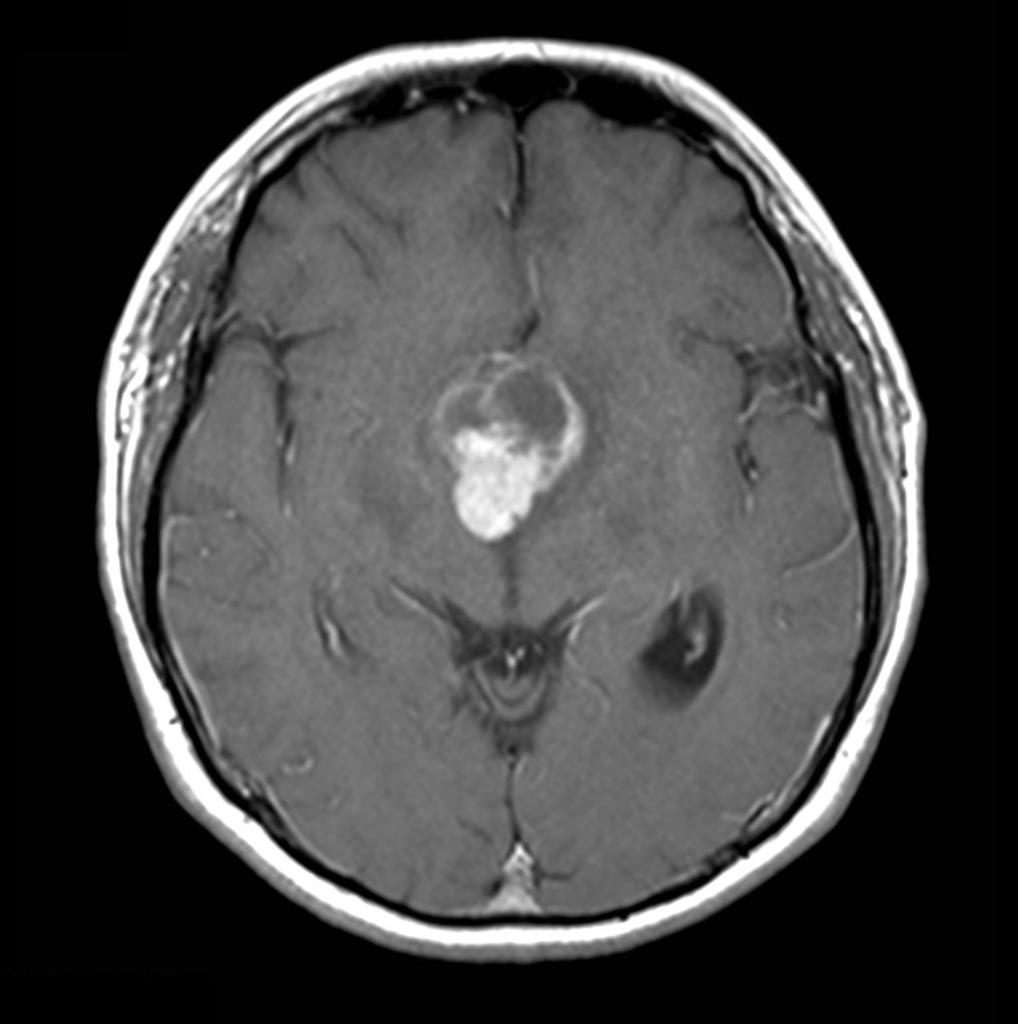 | ||
| Sarcoidosis |
|
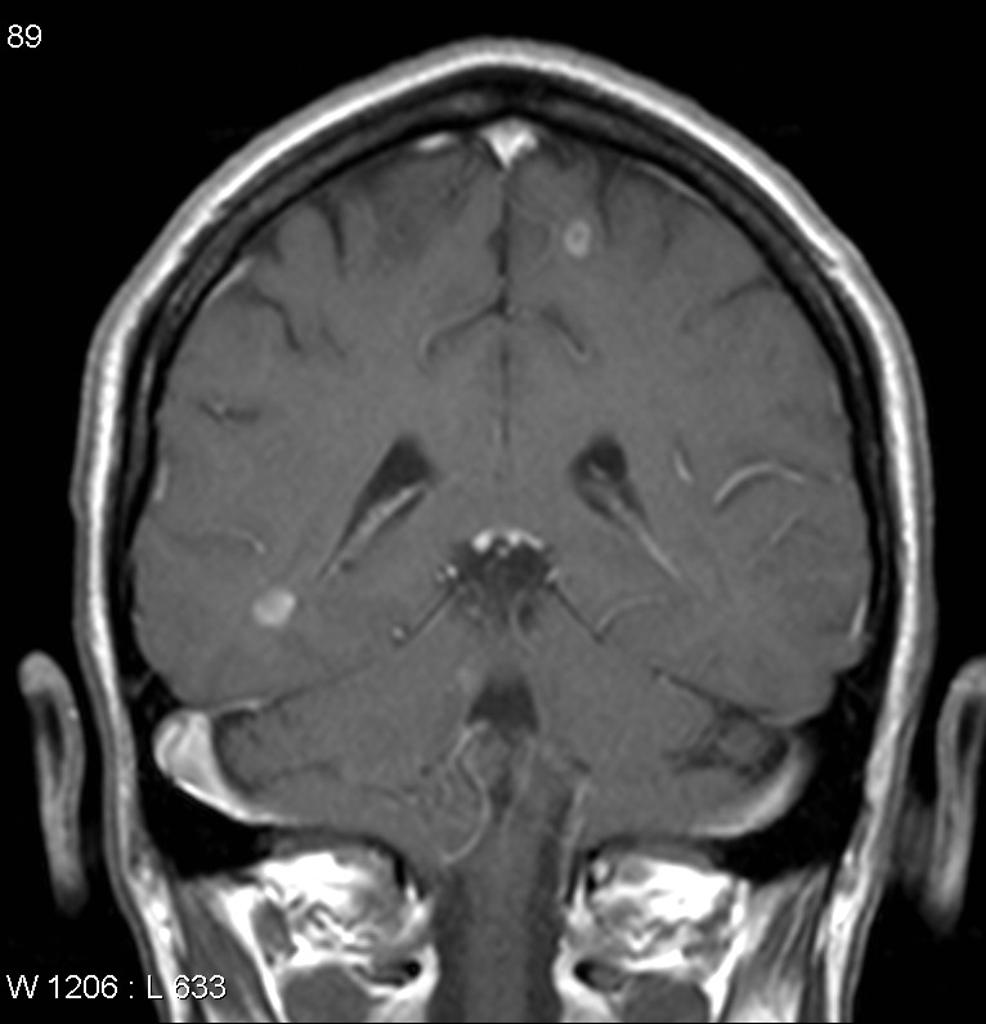 | ||
| Congenital | Hydrocephalus |
|
Dilated ventricles on CT and MRI
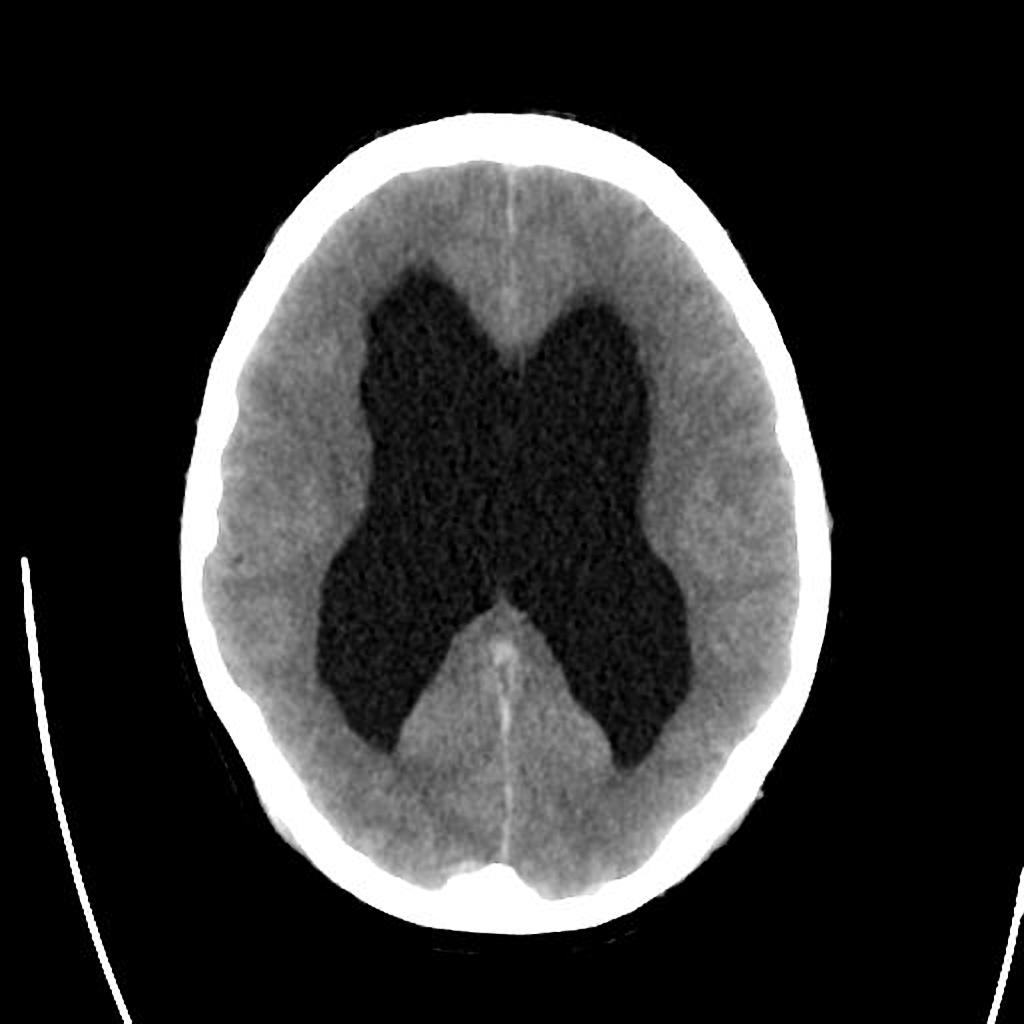 | |
| Wolfram Syndrome (DIDMOAD) |
| |||
| Nephrogenic | Acquired | Drug-induced (demeclocycline, lithium) |
| |
| Hypercalcemia |
| |||
| Hypokalemia |
| |||
| Multiple myeloma |
|
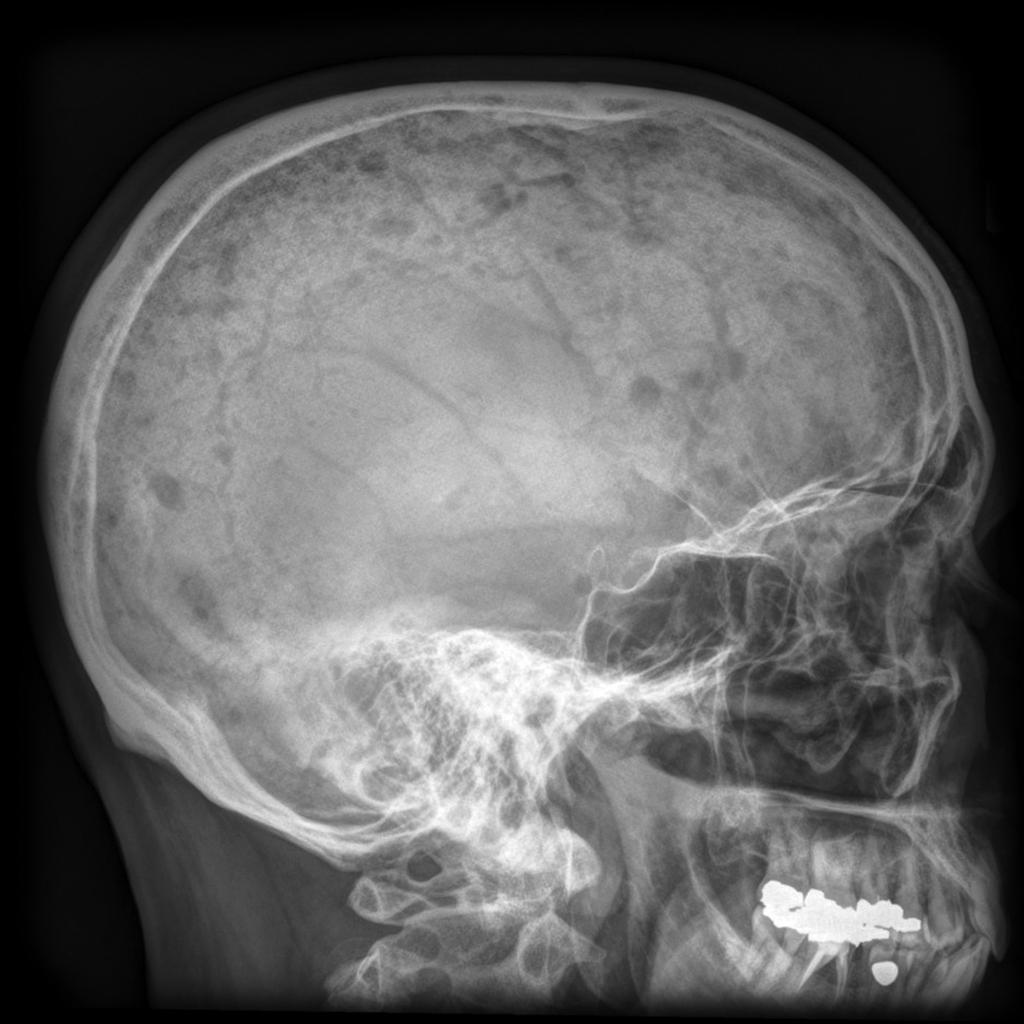 | ||
| Sickle cell disease |
|
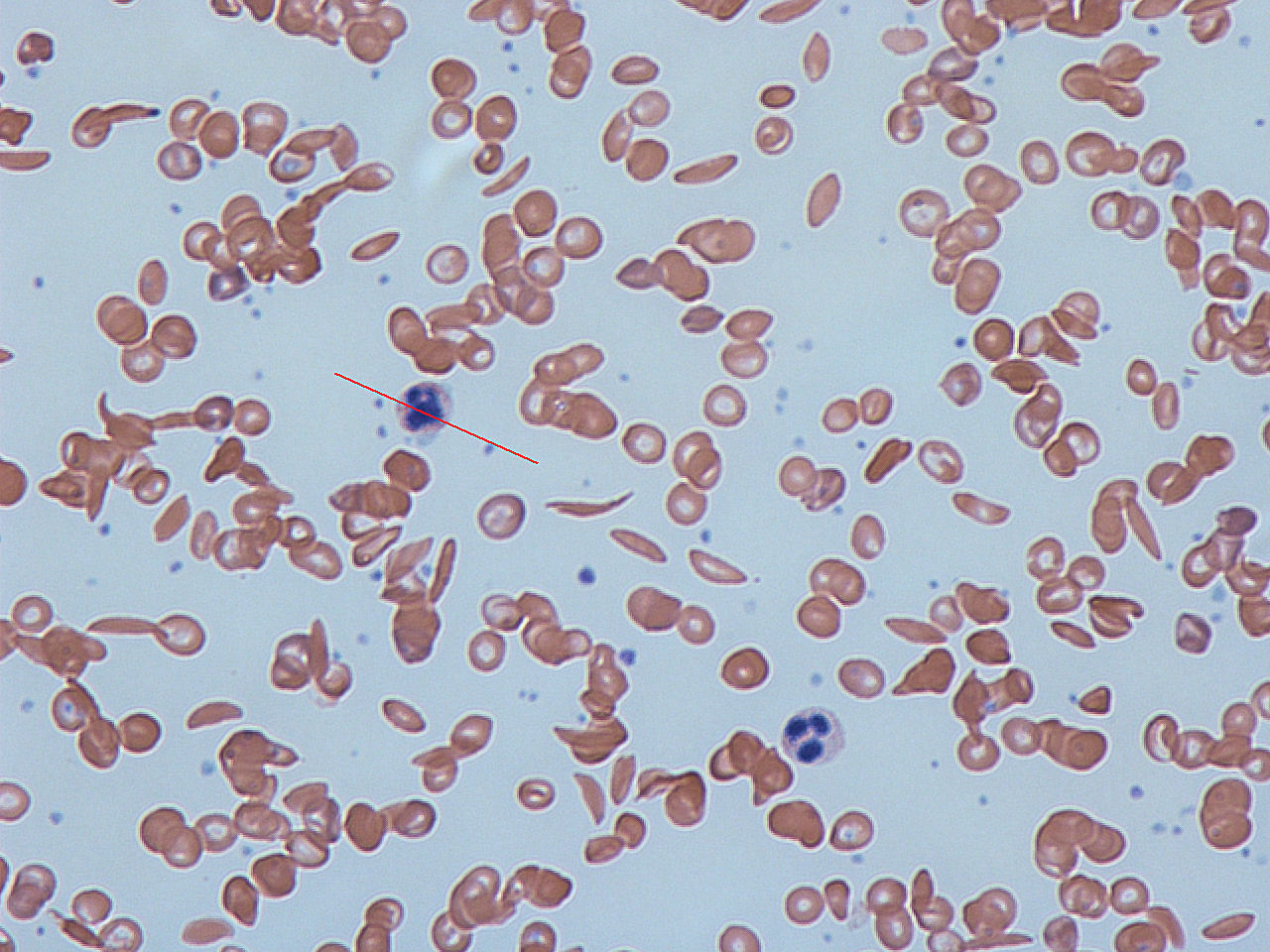 | ||
| Primary polydipsia | Psychogenic |
| ||
| Gestational diabetes insipidus |
| |||
| Diabetes mellitus |
| |||
References
- ↑ Ghosh KN, Bhattacharya A (1992). "Gonotrophic nature of Phlebotomus argentipes (Diptera: Psychodidae) in the laboratory". Rev Inst Med Trop Sao Paulo. 34 (2): 181–2. PMID 1340034.